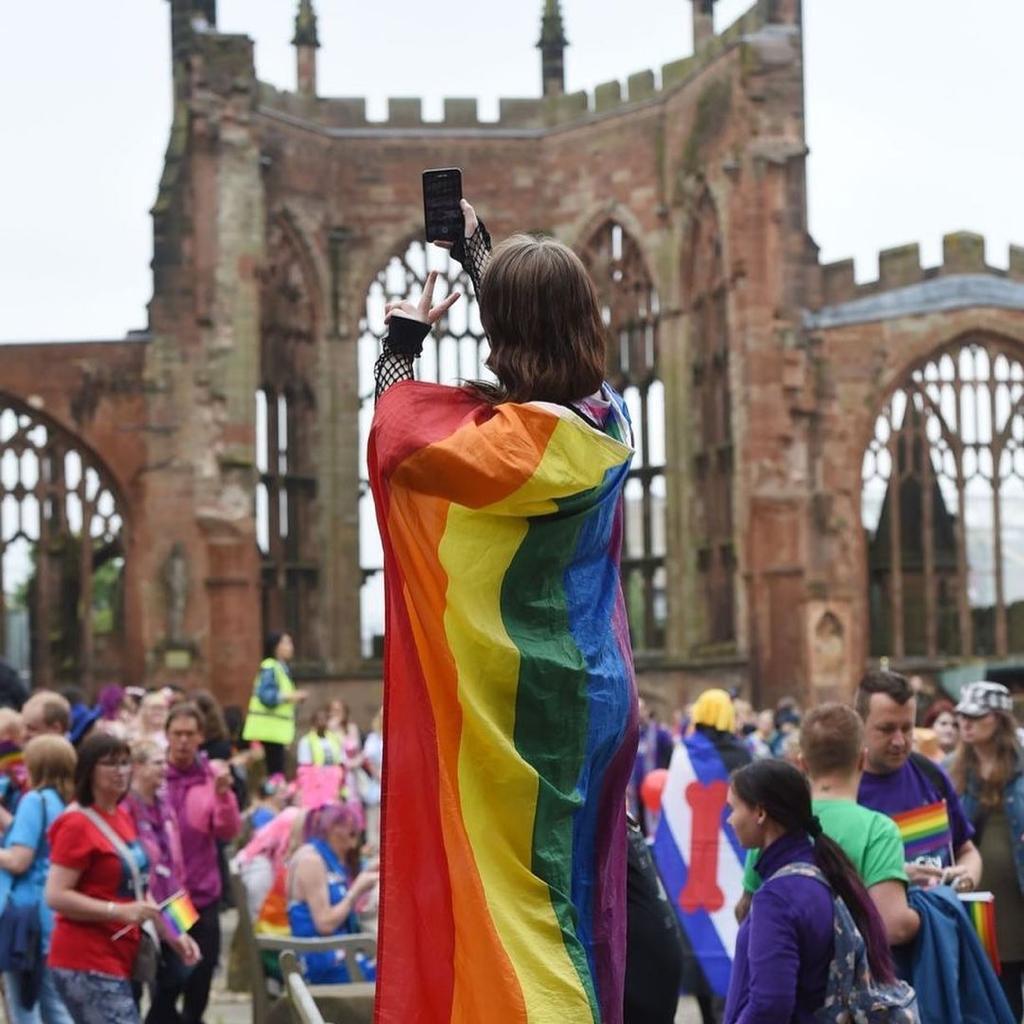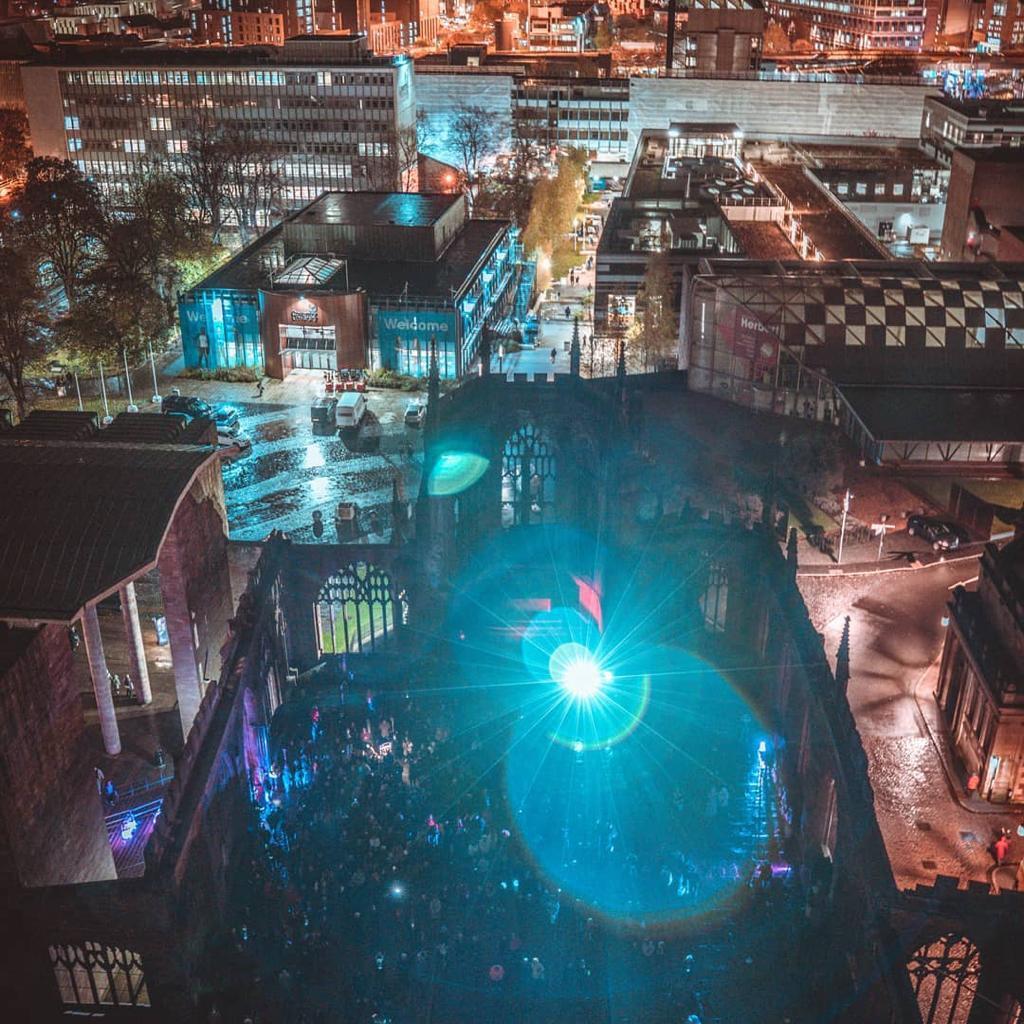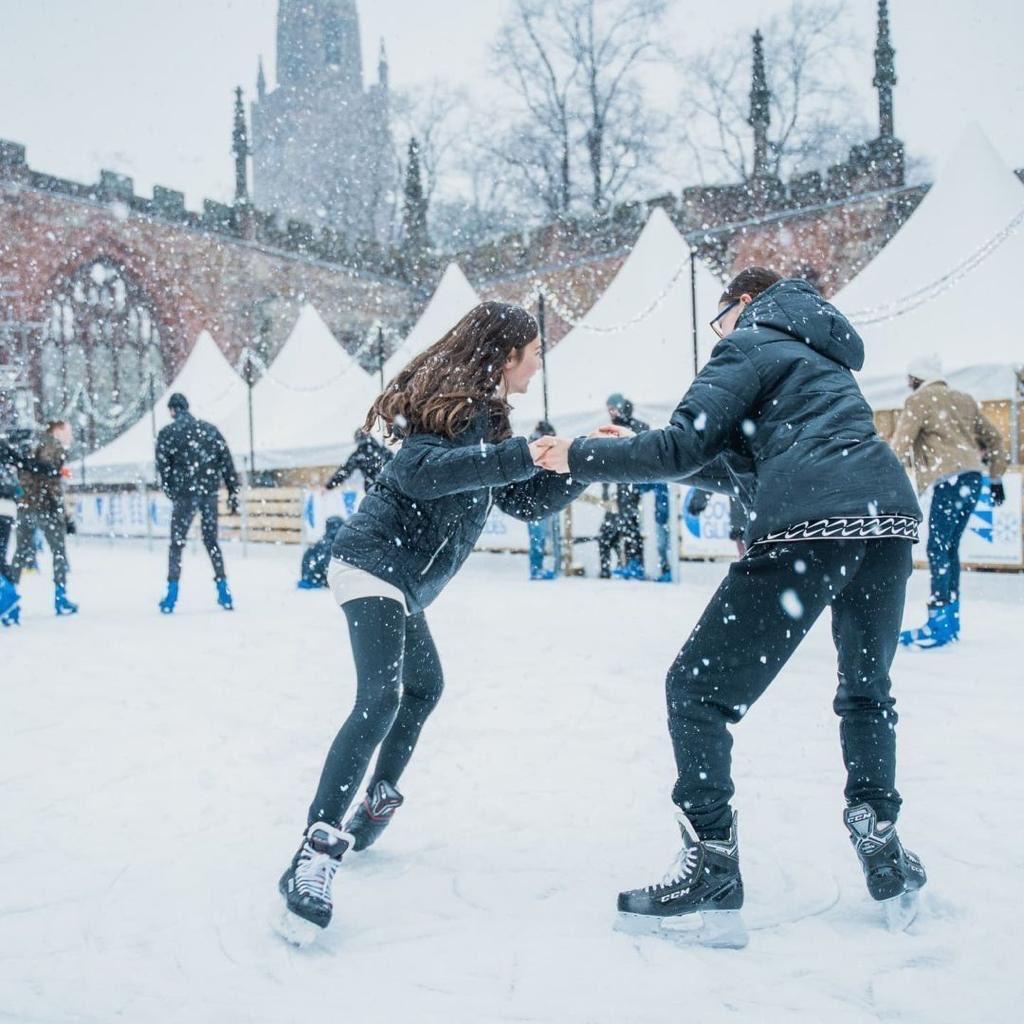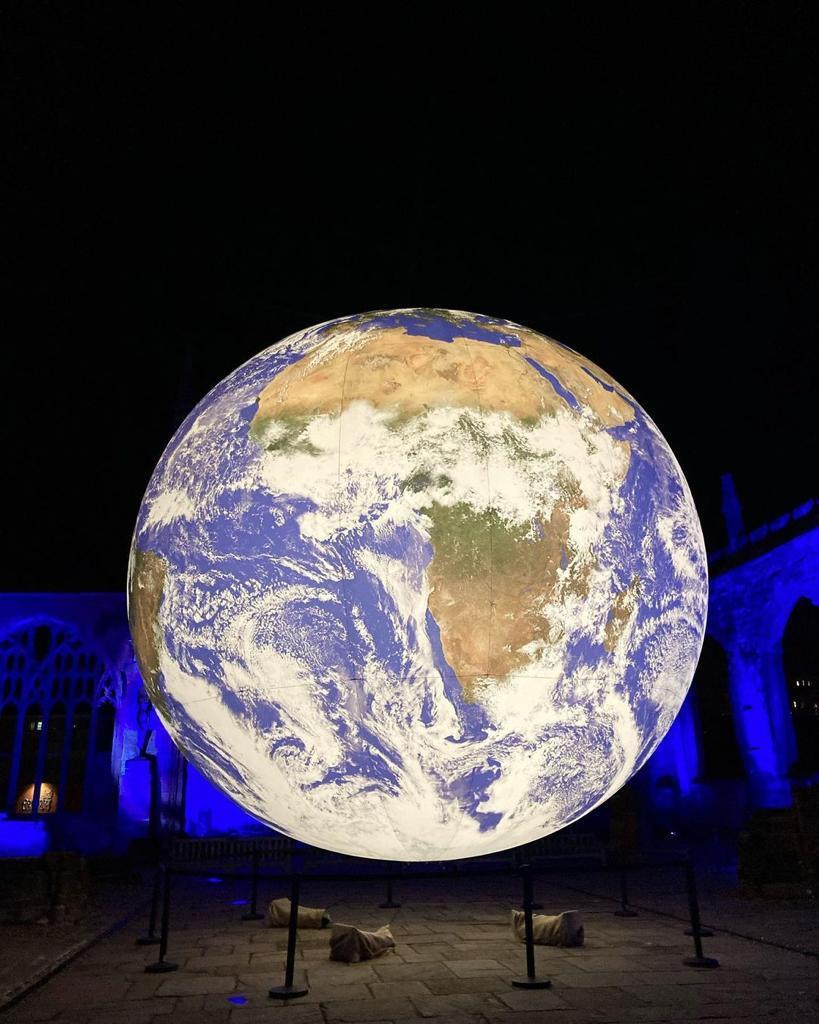
What's on
Absence/Presence Photography Exhibition
Event details
Sunday 12-3.30pm
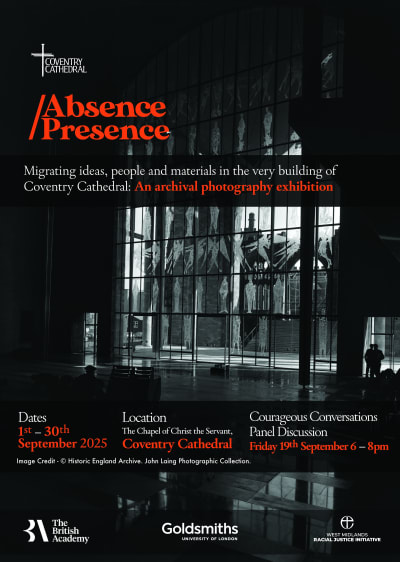
We are “magically feeling and grasping at how that which appears to not be there is often a seething presence.” (Avery Gordon, Ghostly Matters, 1997 p.8).
There are many ways to speak of the building of Coventry Cathedral. The migration of ideas, people and materials are very much part of the making of the cathedral. Absence/Presence is an invitation to participate in the process of searching for stories sitting on the side, outside the usual frames of reference.
Whilst Basil Spence, the architect of the cathedral, was born in India due to empire, workers from the empire, as well as refugees and displaced persons from Europe and local people contributed to the building of the cathedral.
We invite you to reflect on the groundings of this cathedral, of the planetary relations to stone and soil, as well as those who toiled for it with their skills, whilst so often sitting on the sidelines and shadows of the established stories. Contribute towards how we try to catch up with this past in the present moment.
Photography from the Laing archive is placed in the circular glass structure of the Chapel of Industry, looking out on a vastly changed city since the new cathedral was built. The images re-route associations with the building, shifting towards lesser-known figures and smaller voices in histories. Moving viewfinders, as we look out to the grounds of the city to ghostly matters.
We invite you to dwell on imagining what is left unseen and unheard. Take time to pause on the ambivalence of the images, pondering on who was building and making the cathedral in the post-war moment. Absence/Presence creates a contact zone for searching stories sitting on the edges. Inviting audiences into the imaginative space of shadows.
Newspapers, journals, diaries, books, as well as a site-responsive podcast series Hear Here, spur our imaginations to experiment, to explore how we tell what is yet to be told or heard. How do we make it possible to create a space to “hear here” in locally situated and globally expansive way?
The fabric of the building, as well as the fabrication of social life in the completed architecture, signals towards the need for a collaborative collection process. Responding to different kinds of archival materials, as points of interdisciplinary conversation and collaboration, an “art of contact zones” (Mary Louise Pratt,1991) is instituted. Different kinds of material archives invite further assemblies on how people assembled to make architectures of social lives.
The word experiment runs through the entire fabric of cathedral post-war life. The indexicality of material archives gesture towards anti-racist practices forged in the cathedral. Conferences, courses, reading lists and study circles were present from the sixties onwards. Alongside discussions of ‘People and Cities’ and ‘Community Race Relations’, this was the site where the sounds of Ravi Shankar, Alla Rakha, Duke Ellington, as well as Yoko Ono and John Lennon’s ‘Acorns for Peace’ living sculpture assembled, as did a UN Youth assembly, along with dramas and talks on the atomic bomb, Hiroshima and nuclear disarmament. We invite you to touch base with global and planetary threads running through the very fabric of the cathedral.
Big names and established stories repeated in the cathedral, also invite a globally connected planetary approach. A sideways perspective helps to bring into the light a contrapuntal reading, juxtaposing dominant narratives with more complex and textured appreciation of place-based conjunctures. This exhibition institutes an indexicality of relationships with the architectures of the cathedral. Basil Spence spoke of his own grounding, including how he was profoundly influenced as a child by the Elephanta Caves in Bombay. The caves were part of colonialism as well as resistance to it.
‘Constituting An Archive’ as a living heritage, involves an ongoing, never complete and open-ended process, as stated by the cultural theorist Stuart Hall (2001). Squirreling across boxed categories, movement along and against the grain of regular idioms, releases inter-disciplinary horizontal methods to approach the past as a catalyst for futures. Different kinds of material archives invite further assemblies on how people assembled to make architectures of social lives.
This exhibition and the public event on ‘Courageous Conversations’ (19th September 6-8pm) with Monica Brown and Holly Cooper, is supported by Prof. Nirmal Puwar’s British Academy Innovation Fellowship (2023-25) on ‘Multicultural Experiments in the Civic Life of Coventry Cathedral’, Goldsmiths University, the West Midlands Racial Justice Initiative and Coventry Cathedral.
References:
Avery Gordan (1997) Ghostly Matters, University of Minnesota Press.
Mary Louise Pratt (1991) ‘Arts of the Contact Zone’, Profession, 33–40.
Stuart Hall (2001) ‘Constituting an archive’. Third Text, 15 (54), 89–92.
Funded by the West Midlands Racial Justice Initiative
